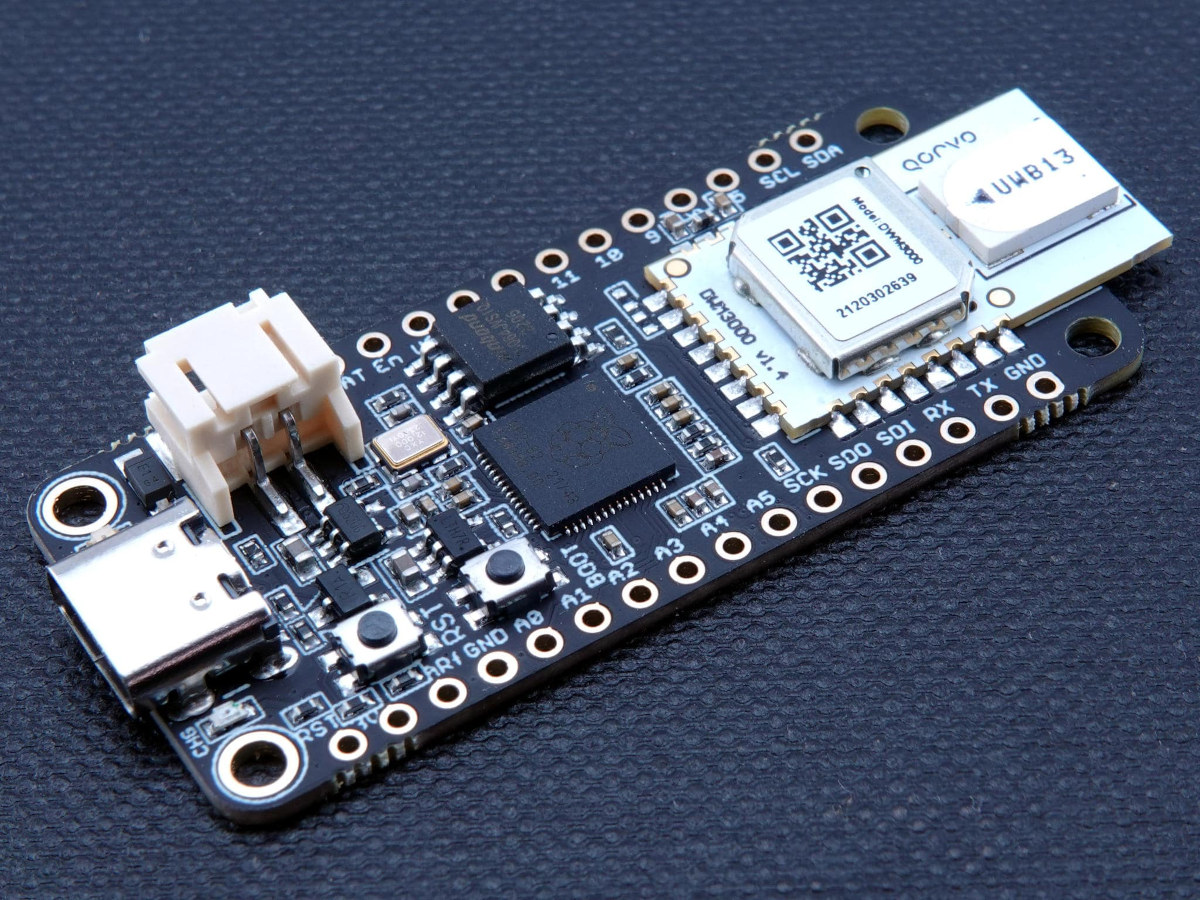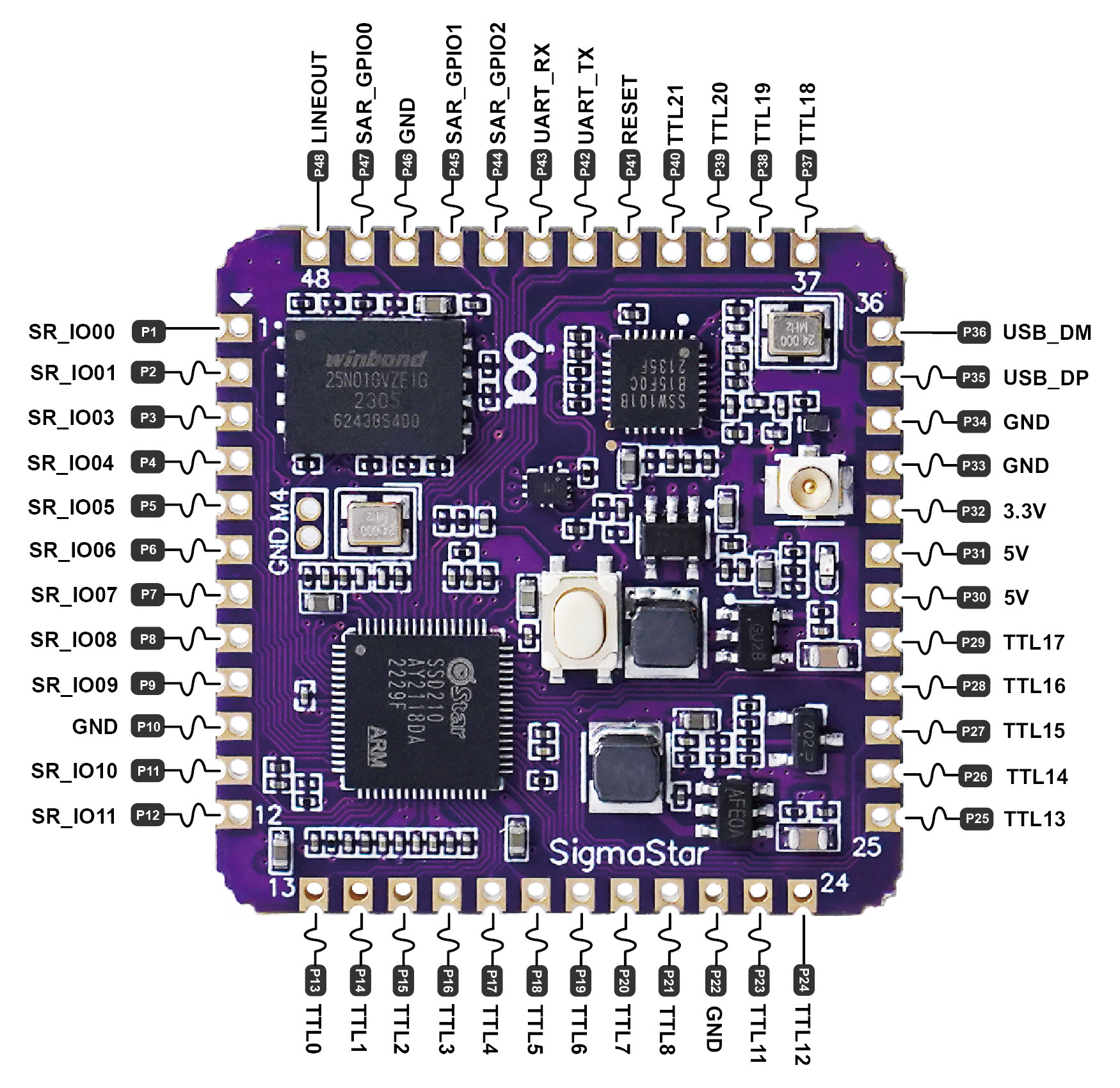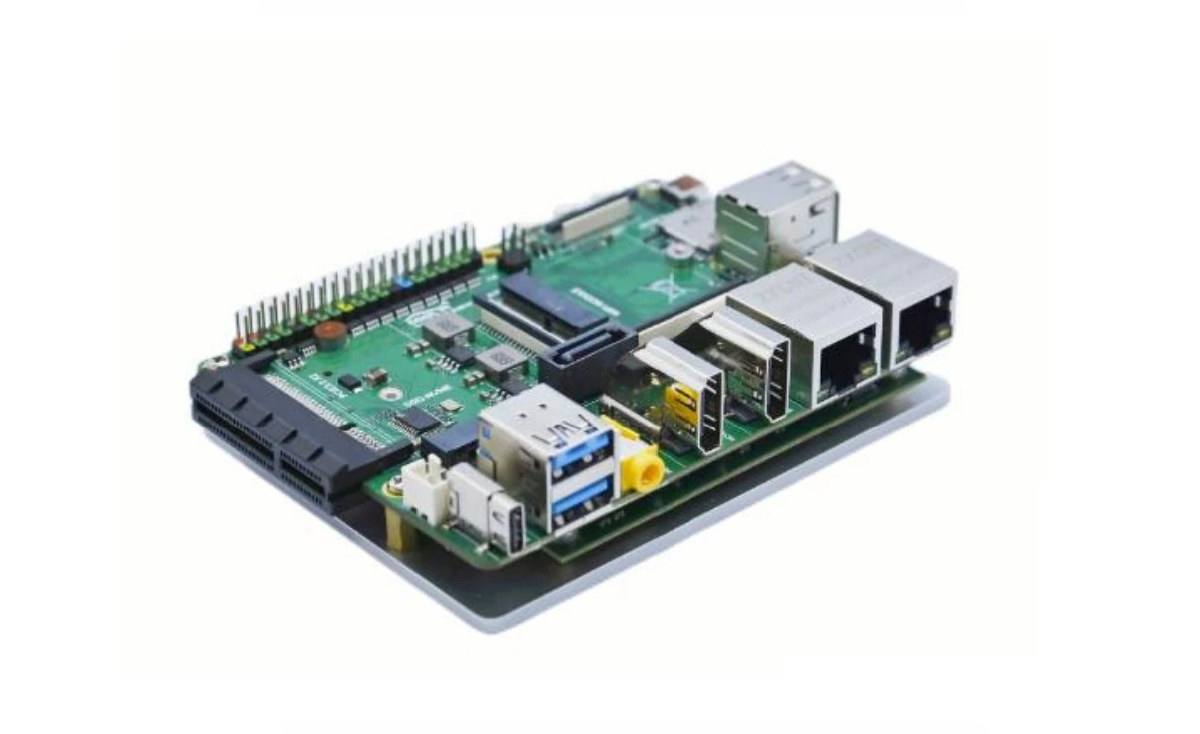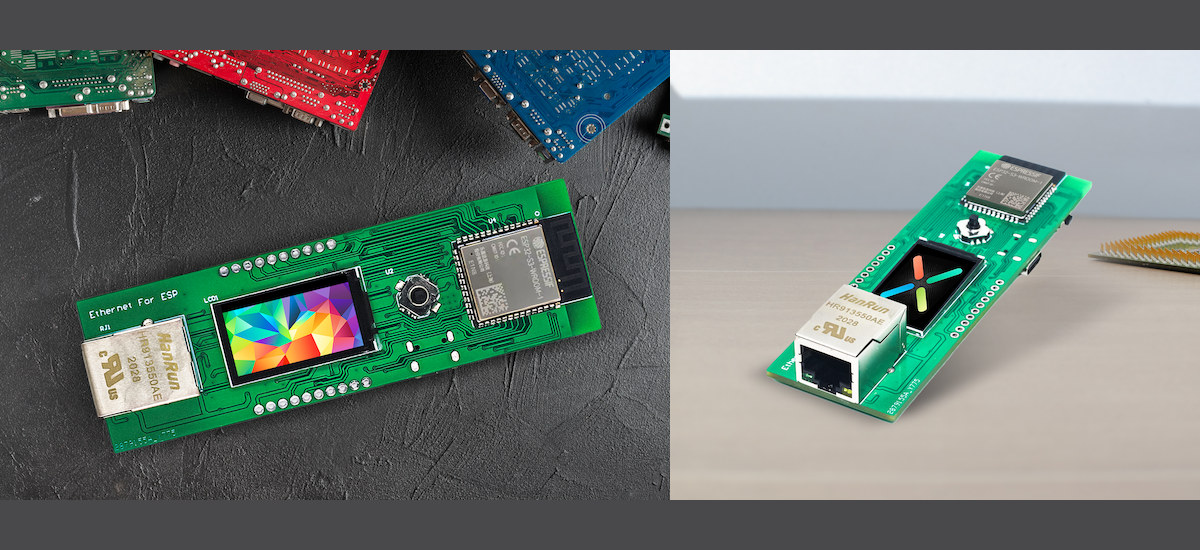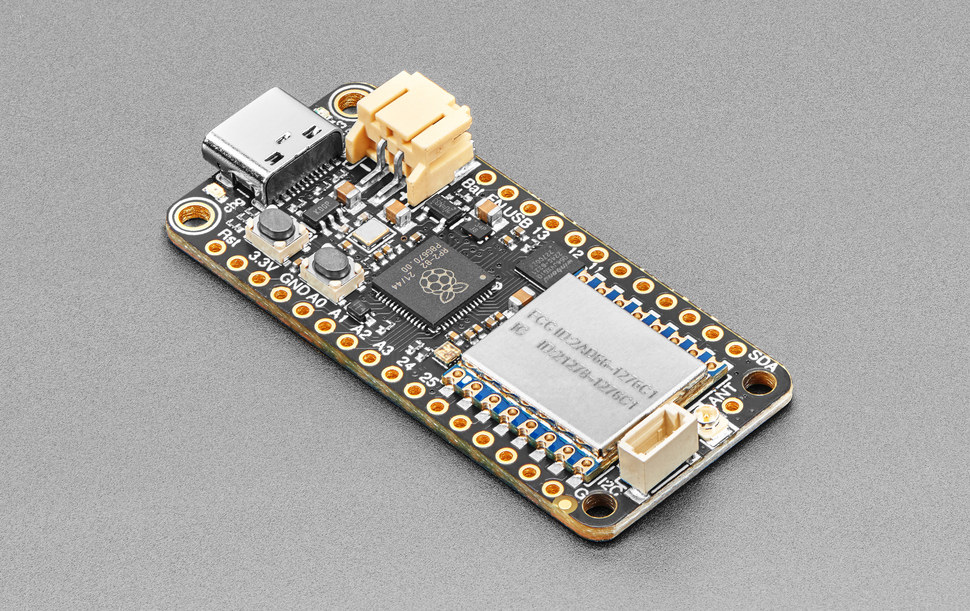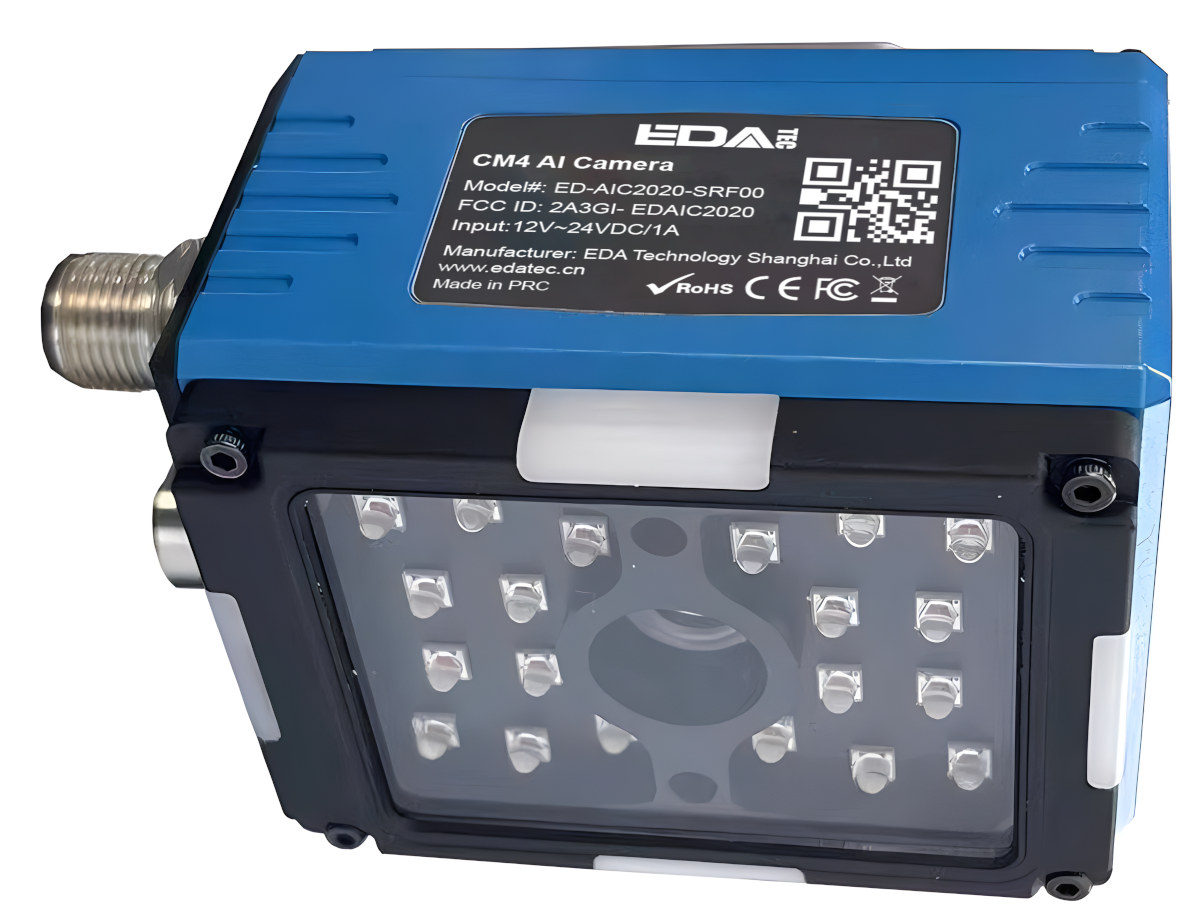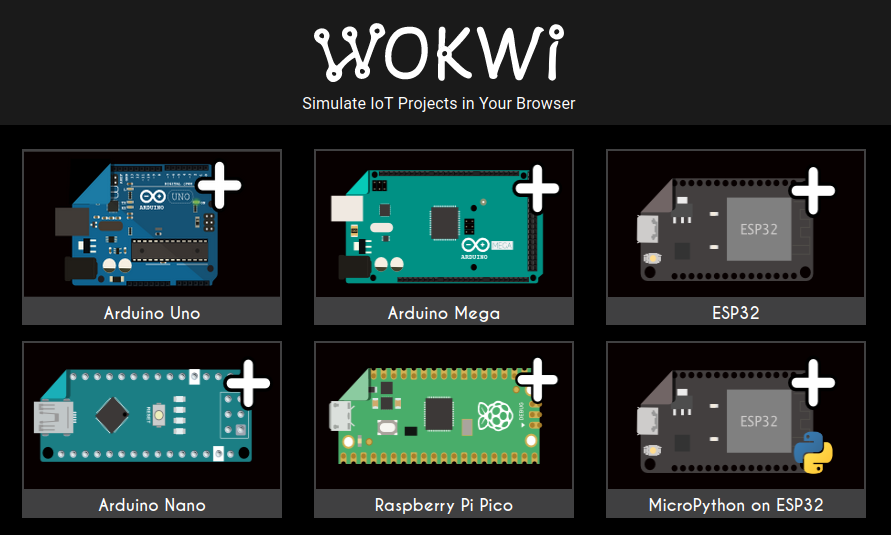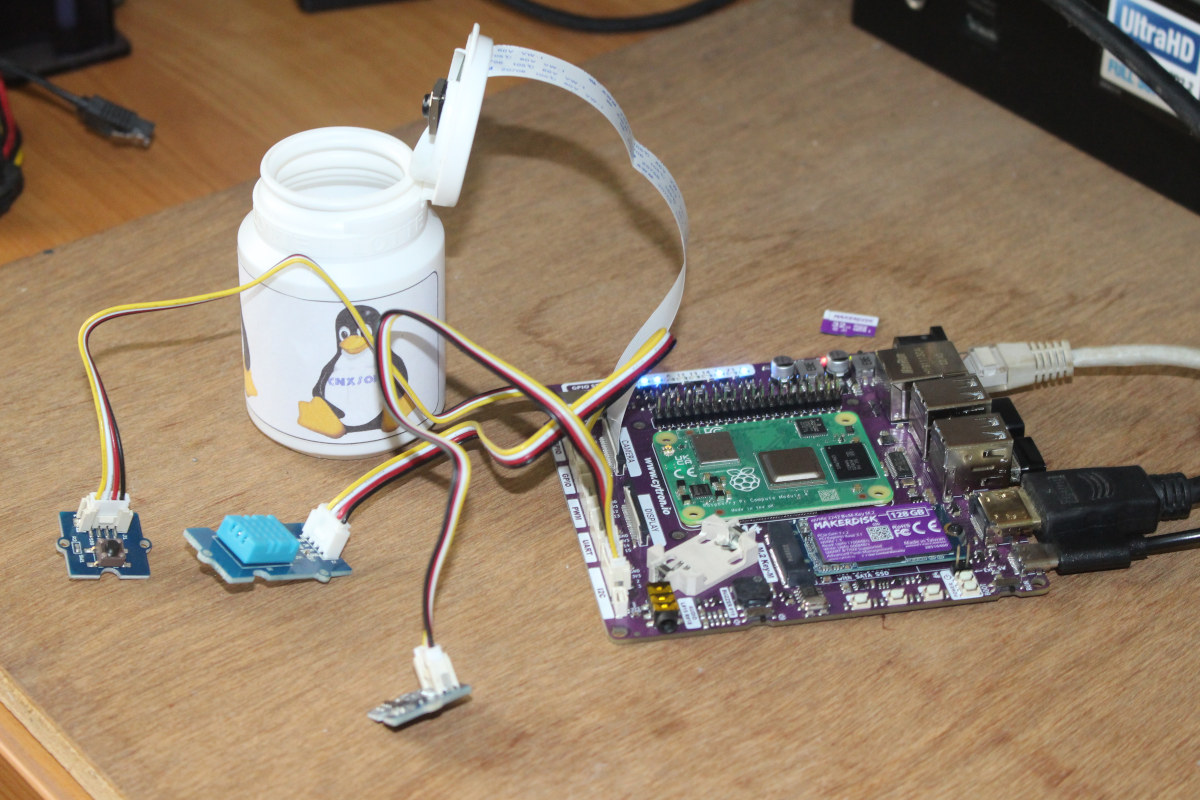The Challenger RP2040 UWB board features a Raspberry Pi RP2040 microcontroller combined with a DWM300 UWB (Ultra-Wide Band) module in the Adafruit Feather form factor and is designed for indoor positioning and ranging applications with an up to 10-centimeter accuracy, and data transfers up to 10 Mbps. The first Challenger RP2040 board was introduced in 2021 with an ESP8285 WiFi chip, iLabs (Invector Labs) shortly followed up with the Challenger RP2040 LoRa with an RFM95W LoRa module, and they also made models with NFC and cellular connectivity. The Swedish company has now just introduced their latest Challenger board with the Challenger RP2040 UWB leveraging UWB technology. Challenger RP2040 LoRa board preliminary specifications: MCU – Raspberry Pi RP2040 dual-core Cortex-M0+ MCU @ 133MHz with 264KB SRAM Storage – 8MB flash Wireless module – Qorvo DWM3000 UWB module connected via SPI Chip – Qorvo DW3110 ultra-wideband (UWB) transceiver IC, compliant with IEEE […]
$7 DongshanPI-PicoW is a small Arm Linux board with SSW101B USB WiFi chip, four 12-pin headers
Based on its name, the DongshanPI-PicoW board/module aims to be an Arm Linux alternative to the Raspberry Pi Pico W with a SigmaStar SSD210 dual-core Cortex-A7 processor with 64MB RAM, an SSW101B USB WiFi 4 chip, plus a good amount of I/Os thanks to four 12-pin headers. The module also comes with a 128MB SPI flash to run Linux, takes 5V power input, and offers a display interface up to 1280×800, USB 2.0, audio interfaces, and more in a small 31×31 mm form factor with 48 through and castellated holes that should be easy to integrate into compact devices. DongshanPI-PicoW specifications: SoC – SigmaStar SSD210 dual-core Arm Cortex-A7 at up to 1.0GHz with FPU, NEON, MMU, DMA, 2D graphics accelerator, 64MB on-chip DDR2 RAM Storage – 128MB SPI NAND flash (Winbond W25N010) Connectivity – Sigmastart SSW101B 802.11b/g/n 2.4GHz 1T1R WiFi 4 module + u.FL antenna connector USB switch – Onsemi […]
Cool Pi CM5 evaluation board features Rockchip RK3588/RK3588J system-on-module
Cool Pi CM5 is a system-on-module based on Rockchip RK3588 or RK3588J (industrial temperature range) octa-core Arm Cortex-A76/A55 processor with up to 32GB RAM, 256GB eMMC flash, offered with a development board with dual GbE, two 8K HDMI 2.1 ports, a PCIe 3.0 x2 slot, M.2 NVMe and SATA storage, and more… At the end of last year, we wrote about the Cool Pi 4 as a much faster alternative to Raspberry Pi 4 SBC, and the company has now launched a Raspberry Pi Compute Module 4 and Radxa CM5 alternative with the Cool Pi CM5 MXM 3.0 system-on-module that they offer along with a feature-rich evaluation board (EVB). Cool Pi CM5 EVB specifications: System-on-Module SoC – Rockchip RK3588(J) octa-core processor with 4x Cortex‑A76 cores @ up to 2.4GHz, 4x Cortex‑A55 core @ 1.8GHz Arm Mali-G610 MP4 “Odin” GPU Video decoder – 8Kp60 H.265, VP9, AVS2, 8Kp30 H.264 AVC/MVC, 4Kp60 […]
ESPi Ethernet & info display board comes with ESP32-S3 module or Raspberry Pi Pico W board (Crowdfunding)
SB Components’ ESPi is a WiFi-enabled Ethernet board with a 1.14-inch information color display either coming with an ESP32-S3 WiFi and Bluetooth module or designed as a carrier board for the Raspberry Pi Pico W board. I have no idea who needs this, but the ESPi board looks cute and can be used as a 10/100Mbps Ethernet to WiFi (or BLE) gateway with a small TFT display, and there’s also a small joystick on the board to control a potential menu or user interface rendered in the display. ESPi board specifications: Module/Board (one or the other) ESP32-S3-WROOM-1 module with ESP32-S3 dual-core LX7 microprocessor @ up to 240 MHz with Vector extension for machine learning, up to 16MB flash, up to 8MB PSRAM, WiFi 4, and Bluetooth 5 with LE/Mesh Raspberry Pi Pico W board with Raspberry Pi RP2040 dual-core Cortex-M0+ microcontroller @ 133 Mhz with 264KB RAM, 8MB SPI flash, […]
Adafruit Feather RP2040 with RFM95 LoRa Radio launched for low power long range IoT communication
Adafruit has designed a new variant of the Feather RP2040 board with the “Adafruit Feather RP2040 with RFM95 LoRa Radio” featuring a 900 MHz RFM95 “RadioFruit” module and following the “Adafruit Feather RP2040 with DVI Output Port” that we covered last week. The board ships with 8 MB of QSPI flash, supports USB-C or LiPo battery power, is offered in the familiar Feather form factor, and the built-in RFM95 module supports 433 MHz, 868MHz, and 915MHz frequencies, selectable by firmware, for global coverage. Adafruit Feather RP2040 with RFM95 LoRa Radio specifications: MCU – Raspberry Pi RP2040 dual-core Arm Cortex M0+ microcontroller @ 133 MHz with 264 KB RAM Storage – 8MB SPI flash RFM95 LoRa wireless module Semtech SX127x LoRa transceiver Frequency bands – License-free ISM bands: ITU “Europe” @ 433MHz and ITU “Americas” @ 900MHz. (CNXSoft: it looks 900 MHz here means 868 MHz (EU) and 915 MHz (US), […]
IP67-rated CM4 AI camera uses Raspberry Pi Compute Module 4 for computer vision applications
EDATEC ED-AIC2020 is an IP67-rated, Raspberry Pi CM4-based industrial AI camera equipped with a fixed or liquid lens and LED illumination that leverages the Raspberry Pi Compute Module 4 to run computer vision applications using OpenCV, Python, And Qt. We’ve previously written about Raspberry Pi Compute Module-based smart cameras such as the Q-Wave Systems EagleEye camera (CM3+) working with OpenCV and LabVIEW NI Vision and the StereoPi v2 (CM4) with stereo vision. But the EDATEC ED-AIC2000 is the first ready-to-deploy Raspberry Pi CM4 AI camera we’ve covered so far. EDATEC “CM4 AI camera” (ED-AIC2020) specifications: SoM – Raspberry Pi Compute Module 4 up to 8GB RAM, up to 32GB eMMC flash Camera 2.0MP global shutter or 5.0MP rolling shutter Acquisition rate – Up to 70 FPS Aiming point – Red cross laser Built-in LED illumination (optional) Scanning field Electronic liquid lens Fixed focal length lens Networking Gigabit Ethernet M12 port Communication protocols – Ethernet/IP, PROFINET, Modbus […]
Wokwi – An Arduino, Raspberry Pi Pico, and ESP32 board simulator
Wokwi is an online simulator for Arduino, Raspberry Pi Pico, and ESP32 boards, or even your own custom microcontroller board designed to learn programming without the actual hardware. My girlfriend’s daughter has just attended a free 5-day online course about AI, IoT, ESP32, MicroPython, and more organized by King Mongkut’s Institute of Technology Ladkrabang (KMITL) and IMAKE Innovation, a STEM education company in Thailand. I was told they had some homework for ESP32 as part of the course, so I asked her whether she wanted an ESP32 board. But she said no need. So then I asked how to program the ESP32 without the board, or do they have a simulator? And indeed I was sent the screenshot below along with a blurry video showing the LED display updated as the program runs in the web browser. Considering ESP32 boards are so cheap and external modules or a breadboard are […]
Cytron CM4 Maker Board review – Part 2: NVMe SSD, RTC, Buzzer, Grove modules, ChatGPT…
We’ve already checked out Cytron’s CM4 Maker Board kit with a Raspberry Pi CM4 system-on-module and booted the system with the included 32GB “MAKERDISK” Class 10 microSD card preloaded Raspberry Pi OS in the first part of the review. For the second part of the CM4 Maker review, I’ve mostly used the 128GB NVMe SSD provided by the company and played with other features of the board including the RTC, the buzzer, some Seeed Studio grove modules, and even got help from ChatGPT for one of the Python programs I used. Booting Cytron CM4 Maker Board with the “MAKERDISK” NVMe SSD I connected several Grove modules with GPIO and I2C interfaces, a Raspberry Pi Camera Module 3, an Ethernet cable, two RF dongles for a wireless keyboard and mouse, an HDMI cable to a monitor, and finally inserted the provided 5V/3.5A USB-C power adapter. The MAKERDISK SSD comes with Raspberry […]


